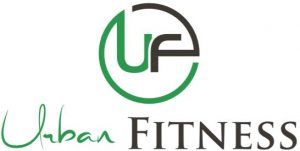
![]()
There are numerous proven benefits from participating in exercise. For example, exercise can decrease the risk of developing conditions such as coronary heart disease (CHD), type 2 diabetes, stroke and even some cancers (e.g., breast and colon). Further, exercise can reduce blood pressure, as well as other CHD biomarkers, help with weight management and improve insulin sensitivity. Exercise can also positively impact cognitive function and overall wellbeing.3
These are just a few of the proven benefits and research areas that have been heavily studied in the fields of exercise physiology and medicine. There is also another field related to exercise and health that has a unique tie to our current pandemic: exercise immunology.
In recent years, research in the field of exercise immunology has increased drastically. The immune system is the primary physiological system that responds to foreign agents that may be harmful.5 Primarily composed of blood leukocytes, or white blood cells, leukocytes are responsible for circulating though the blood to protect us from viral, bacterial and parasitic agents. Exercise, it turns out, can influence this physiological system responsible for keeping us healthy, which is critically important in these times.
There are five main types of leukocytes: neutrophils, basophils, eosinophils, lymphocytes and monocytes.5

Much of the current available evidence related to exercise-induced immunologic adaptations are from studies using acute bouts of aerobic exercise. While the mechanistic details underlying the immune response to exercise are very complex, in general, exercise appears to stimulate our immune system. This, in turn, helps mitigate our chances of getting sick while simultaneously improving our cardiovascular and musculoskeletal systems, as well as our cognitive function.
How does exercise influence our immune system? It is important to note acute bouts of exercise with varying intensities, durations and types all stimulate the immune system in different ways. Exercise not only affects the quantity but also the physiological activity and mobilization of leukocytes throughout the body.5 For example, during exercise, lymphocyte levels increase and then decrease below pre-exercise levels after the cessation of the exercise bout. Neutrophil levels increase during and after exercise.4 Natural killer cells thought to be the first line of defense against viral pathogens, which respond quickly to virus-infected cells, are increased at the onset of exercise, peak within 30 minutes of endurance exercise, and remain elevated for up to three hours after the beginning of the exercise bout6 — a heightened immune system, to say the least.
Some researchers suggest there appears to be an intensity threshold at which the immune response allows for an open window, or a temporary period of altered immunity, where we may be more susceptible to infection. According to literature, moderate intensity exercise boosts the immune system while prolonged intense exercise, greater than 70% of relative VO2 max, decreases the immune system.5 However, in a recent article, investigators performed a review of the related literature on this open-window concept and found the evidence to support this concept to be spurious, especially when considering study design and confounding factors such as nutrition, physical and psychological well-being of the participating subjects.1
Further, authors propose the transient decrease in lymphocytes, one to two hours post-exercise, is actually beneficial as these leukocytes may very well redistribute to peripheral tissues to perform surveillance and destroy foreign pathogens.2 Taken together, the authors of the review concluded it is unlikely that vigorous and prolonged exercise heighten the risk of infection and should not be considered a deterrent for those seeking to become more physically active.1 This is extremely important when taking into account all the other conferred benefits of living a physically active lifestyle on health, longevity and quality of life.
Overall, the contemporary evidence suggests regular exercise can enhance the immune system and reduce the incidence of communicable diseases (e.g., viral and bacterial) and non-communicable (e.g., cancer) diseases. Further, a physically active lifestyle may actually delay immunological aging, or help keep our immune system strong as we age.1 These positive exercise-induced immunological adaptations, coupled with all the other proven benefits of exercise, strongly supports the advocation of promoting fitness and health across one’s lifespan as a means to living longer, healthier and happier lives.
The fitness industry, perhaps now more than ever, is uniquely positioned to support the health and well-being of our communities and our country. Not only can the fitness industry help support our medical community as a vital cornerstone in the health continuum of care for managing disease through promoting healthy lifestyles, but we can also help prevent diseases from happening in the first place. We know there will be another pandemic — COVID-19 has shown us this. It has also shown us we can be more prepared in many regards. Our industry has a rare opportunity to have an even bigger reach, impact more people, make a difference and really improve the health of our members. Keep moving!
- Campbell JP., Turner, JE. Debunking the myth of exercise-induced immune suppression: redefining the impact of exercise on immunological health across the lifespan. Front Immunol. 2018; 9:648.
- Dhabhar FS. Effects of stress on immune function: the good, the bad, and the beautiful. Immunol Res. 2014; 58(2-3):193-210.
- Garber CE., Blissmer B., Deschenes MR., Franklin BA., Lamonte MJ., Lee I-Min., Nieman, DC., Swain. Quantity and quality of exercise for developing and maintain cardiorespiratory, musculoskeletal, and neuromotor fitness in apparently healthy adults: guidance for prescribing exercise. Med Sci Sports and Exerc. 2011; 43(7); 1334-1359.
- Stromberg A., Rullman E., Jansson E., Gustafsson T., Exercise-induced upregulation of endothelial adhesion molecules in human skeletal muscle and number of circulating cells with remodeling properties. J Appl Phsiol. 2017; 122(5):1145-54.
- Thompson, W. ACSM’s clinical exercise physiology. First edition. Philadelphia: Wolters Kluwer Health, [2019].
- Zhang JM, An. J. Cytokines, inflammation, and pain. Int Anesthesiol Clin. 2007;45(2):27-37.
*Original article can be found at: https://clubsolutionsmagazine.com/2020/09/exercising-the-immune-system/

